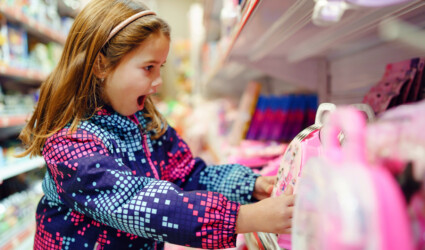I don’t know about you, but it’s impossible for me to set foot in a toy store without buying something. I don’t indulge in fancy shoes, handbags, or makeup, but leave me alone in a retail toy shop (or any retailer for that matter) and I will always buy something. It could be a new game to play with friends and family, a jigsaw for the winter evenings by the fire, a figurine to complete my collection in my home office, or a fidget gadget to indulge during Teams calls. My last purchase was different from what I usually buy. It was my very first LEGO set!
I have always been into toys and games for as long as I can remember, even before working in the industry. However, for many consumers, the focus on toys started with pandemic lockdowns and the associated boredom. Toys and games became a rediscovered pastime for individuals and families, and they have continued buying into the category ever since.
According to our latest report, “Demystifying the Kidult Toy Market in Europe,” the so-called kidult segment, which includes all toys and games bought for a recipient aged 12 and older, was valued at €4.6 billion in 2022 across the EU 5 (i.e., UK, France, Germany, Italy, and Spain); the segment’s incredible growth has been outpacing sales to children for a while now. Toy sales to children have declined by €200M since 2019, but they have increased by €1B for kidults. Back in 2019, kidult sales represented just 23.4% of total toy sales, but jumped to 28% in 2022!
Still, this only represents €15 per head per annum, which is peanuts when compared to dining out, a new shirt, a pair of shoes, an air-fryer, or a new smart phone. Yet the shelf life of toys and games very often outlives those kinds of products. That’s why I think the segment could get much bigger, presenting almost unlimited opportunities for brands, license owners, and retailers.
Why should the industry focus more on the kidult market? Simply put, Europe is facing a demographic challenge driven by an aging population. In the space of 10 years, the number of children under 12 years of age has decreased by 2%, across Europe. That’s three-quarters of a million fewer child consumers. Though Germany and the UK have experienced an increase in the child population up to 11 years of age, France, Italy, and Spain have seen significant declines. And the adult population is rising in all countries, presenting incredible opportunities for toy manufacturers and retailers in the kidult market.
Perhaps we will see a slowdown in 2023 as consumers pull back on toys due to the increased cost of living, but I remind you that the kidults market has been outpacing the kids core part of the industry for a very long time. And as a self-confessed kidult myself – one who happens to work in the industry – I believe there are still plenty of growth opportunities that brands, license owners and retailers can capture to grow this market much further.
Get insights straight to your inbox





